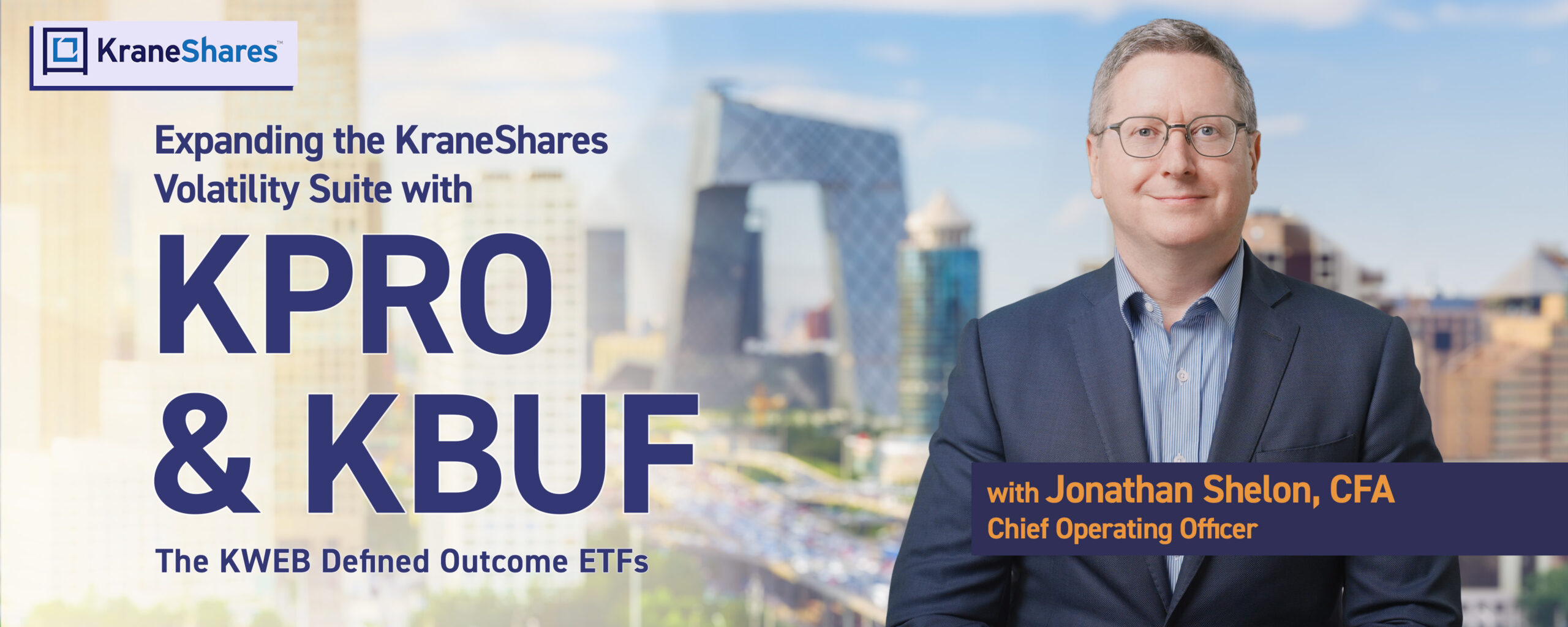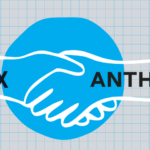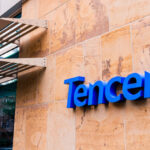
Expanding the KraneShares Volatility Suite with KPRO & KBUF
Transcript
Hi, I'm Jonathan Shelon. I'm the Chief Operating Officer at KraneShares, and we're here today to talk
about our Defined Outcome ETFs, KPRO and KBUF.
KWEB and the KraneShares Volatility Suite
We launched KWEB in 2013 and it has since grown to be our flagship ETF, and now the benchmark for China's Internet Sector. China's Internet Sector is a big part of global growth, especially when you consider that online retail sales in China were $2 trillion in 2023, compared to US online retail sales of only $1 trillion [in 2023].1 Over the last 10 years, KWEB has grown to be one of the most optional ETFs among all US listed ETFs. We now have $6.5 billion in open interest.2 This deep liquid options market has allowed us to produce a volatility management suite for KWEB. In early 2023, we launched the China Internet and Covered Call Strategy ETF, KLIP, ticker K-L-I-P. And we followed that up in 2024 with the launch of two defined outcome strategies, KPRO and KBUF.
What is a Defined Outcome Strategy?
A defined outcome strategy typically defines a maximum amount of downside, say 10%, and also a maximum amount of upside potential. This is done by combining an investment with calls and puts. Defined outcome strategies are most effective when the investment has a lot of volatility but also upside potential, which makes KWEB a good match.
KPRO & KBUF: Structure and Strengths
We built two defined outcome strategies to meet different investor needs. The KPRO ETF has maximum upside potential of 22.69% over its full outcome period, and a maximum loss of 0%. The KBUF ETF has maximum upside potential of 41.2% over the full outcome period, and a maximum loss potential of 10%.
The Funds have characteristics unlike many other traditional investment products and may not be suitable for all investors. The caps and buffers mentioned above do not reflect the effect of fees and assume Funds are held from launch to the end of the outcome period (2 years). For more information regarding whether an investment in the Fund is right for you, please read the Fund's prospectus including "Investor Suitability Considerations."
We built KPRO and KBUF with a two-year time horizon because based on our research, we found that KWEB had sequential years where it could be either up or down. For example, in 2019 and 2020, KWEB was up 29% and 60%. But in ‘22 and ‘23 it was down 17% and down 10%.3 At the end of the two-year period for KPRO and KBUF, we're going to reset the upside potential for them while keeping the downside terms the same. The upside and downside potential for KPRO and KBUF do change over time, and that's why we publish daily updates on our website with the latest upside potential and downside loss potential.
The performance data quoted represents past performance. Past performance does not guarantee future results. The investment return and principal value of an investment will fluctuate so that an investor’s shares, when redeemed or sold, may be worth more or less than the original cost. Current performance may be lower or higher than the performance quoted. For performance data current to the last month-end, please visit our website by clicking here.
Different Choices for Different Investors: Applications of KPRO & KBUF
Despite China being the world's second largest economy and the world's second largest stock market, many investors have little or no investment in China. KPRO and KBUF were designed to help alleviate some of the concerns about downside risk while still allowing for upside participation. There are different ways to use KPRO and KBUF in a portfolio. One is just to use them individually. Another way is to combine them. And when KPRO and KBUF are combined you can create custom return and risk profiles. For example, when we launched KPRO and KBUF, if you invested in them equally you would have maximum downside potential of 5% but maximum upside potential of 30%. This is a unique six-to-one reward-to-risk relationship.
Kraneshares’ Volatility Suite provides powerful tools for gaining exposure to KWEB and China's Internet Sector while controlling downside risk and maximizing upside potential. To learn more about KPRO and KBUF and our entire suite of ETFs, go to www.KraneShares.com and for our daily blog on China, subscribe to www.ChinaLastNight.com. Thanks for watching.
For KPRO standard performance, top 10 holdings, risks, and other fund information, please click here.
For KBUF standard performance, top 10 holdings, risks, and other fund information, please click here.
For KWEB top 10 holdings, risks, and other fund information, please click here.
For KLIP standard performance, top 10 holdings, risks, and other fund information, please click here.
This material contains Jonathan Shelon's opinion. It should not be regarded as investment advice or a recommendation of specific securities.
Citations:
- Data from Statista and the National Bureau of Statistics as of 3/31/2024. Retrieved 6/30/2024. Note: Figures converted from Chinese Renminbi to USD.
- Data from Bloomberg as of 5/31/2024.
- Data from Bloomberg as of 6/30/2024.
















